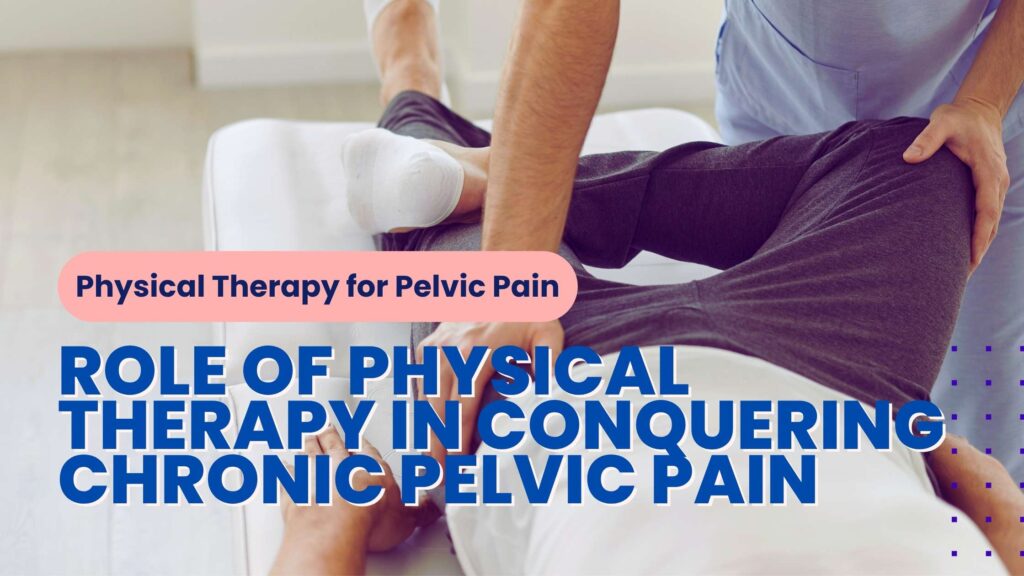Pelvic Pain in Men is a silent epidemic affecting 1 in 10 adult males—yet it’s rarely discussed. Whether it’s a dull ache after sitting, burning during urination, or sharp pain that derails intimacy, pelvic pain in men disrupts work, relationships, exercise, and self-confidence. The good news: specialized pelvic floor physical therapy resolves or significantly improves symptoms in 75–90% of cases when properly diagnosed and treated.
At AZCCPP, we’ve helped thousands of men—from weekend warriors to CEOs—reclaim pain-free lives using evidence-based, non-surgical approaches. This pillar page covers everything you need to know about pelvic pain in men: anatomy, root causes, red-flag symptoms, diagnostic pathways, and a step-by-step recovery blueprint.
Pelvic Floor Anatomy 101: Why It Matters for Men
The pelvic floor is a muscular diaphragm stretching from the pubic bone to the coccyx, encircling the urethra, rectum, and (in men) the base of the penis. It has four critical jobs:
| Function | How Dysfunction Causes Pain |
|---|---|
| Bladder & Bowel Control | Overactive muscles → urgency, incomplete emptying |
| Sexual Performance | Tightness → painful ejaculation, erectile issues |
| Core Stability | Weakness or spasm → low back, hip, groin referral |
| Lymphatic & Venous Drainage | Congestion → heaviness, throbbing |
Common Causes of Pelvic Pain in Men
Pelvic pain in men rarely has a single trigger. Most cases involve layered dysfunction across muscles, nerves, viscera, and biomechanics.
| Category | Specific Condition | Prevalence | Hallmark Symptoms |
|---|---|---|---|
| Musculoskeletal | Pelvic Floor Myalgia / Hypertonic PFD | 50–60% | Sitting >20 min = pain; painful ejaculation; tailbone tenderness |
| Pudendal Neuralgia | 15–20% | Burning, electric shocks in penis/scrotum; worse with compression | |
| Coccydynia | 10% | Sharp tailbone pain; relief when standing | |
| Urological | Chronic Prostatitis / CP/CPPS (NIH Category III) | 8–12% | Perineal pressure, post-void dribbling, suprapubic ache |
| Interstitial Cystitis / Bladder Pain Syndrome | 3–6% | Urgency, frequency, pain relieved by voiding | |
| Gastrointestinal | Chronic Constipation / Levator Ani Syndrome | 25% | Straining, incomplete evacuation, rectal fullness |
| IBS Overlap | 30% | Bloating, alternating bowel habits | |
| Post-Surgical / Trauma | Post-Prostatectomy Pain | 10–15% post-RP | Scar tethering, incontinence, deep pelvic ache |
| Hernia Repair Adhesions | Variable | Groin pulling, referred testicular pain | |
| Neuropathic / Central | Central Sensitization | 20–30% | Pain spreads beyond pelvis; flares with stress |
Symptom Checker: Is This Pelvic Pain in Men?
Use this AZCCPP 60-Second Screener (answer Yes/No):
| Question | Yes → Likely Pelvic Floor Involvement |
|---|---|
| Does pain worsen after prolonged sitting (desk, car, bike)? | ⬜ |
| Do you feel urgency even with an empty bladder? | ⬜ |
| Is ejaculation painful or followed by lingering ache? | ⬜ |
| Do bowel movements require >5 min of straining? | ⬜ |
| Does leaning forward (e.g., tying shoes) trigger groin sharpness? | ⬜ |
| Have antibiotics or prostate meds failed to help? | ⬜ |
Red Flags: When to See a Doctor Immediately
While most pelvic pain in men is musculoskeletal, rule out emergencies:
| Symptom | Possible Cause | Action |
|---|---|---|
| Fever + chills + pelvic pain | Prostate abscess / infection | ER |
| Sudden testicular swelling + severe pain | Torsion | ER |
| Blood in urine/seminal fluid | Stones, cancer | Urologist within 48 hrs |
| Saddle numbness + bowel/bladder loss | Cauda equina | ER |
| Unexplained weight loss + night sweats | Malignancy | Oncology referral |
We follow a 3-Tier Pelvic Pain Protocol to avoid misdiagnosis:
| Tier | Tests | Purpose |
|---|---|---|
| Tier 1: Clinical | Detailed history, pelvic floor muscle exam (external + internal rectal), posture/gait analysis | 80% diagnostic clarity |
| Tier 2: Functional | Uroflowmetry, post-void residual, real-time ultrasound, defecography | Quantifies voiding & evacuation |
| Tier 3: Advanced | MRI pelvis, pudendal nerve block, cystoscopy | Only if Tier 1–2 inconclusive |
Evidence-Based Treatment: The AZCCPP Pelvic Pain Protocol
Phase 1: Pain Modulation (Weeks 1–3)
Goal: Reduce nervous system “volume” by 30–50%
| Intervention | How It Works | Frequency |
|---|---|---|
| Diaphragmatic Breathing + Pelvic Drops | Syncs respiration with pelvic floor relaxation | 10 min, 3×/day |
| External Perineal Release | Manual therapy via sit bones & central tendon | 2×/week in-clinic |
| Heat + TENS | Improves blood flow, blocks pain signals | 20 min nightly |
| Trigger Point Dry Needling (optional) | Resets muscle spindles | 1–2 sessions |
Goal: Normalize muscle tone & joint motion
| Technique | Target | Home Tool |
|---|---|---|
| Internal Rectal Release (consent-based) | Levator ani, obturator internus | Therawand (guided) |
| Pudendal Nerve Glides | Decompresses nerve at Alcock’s canal | 10 reps, 2×/day |
| Hip & SI Joint Mobilization | Restores pelvic ring symmetry | Foam roller + clamshells |
Goal: Rebuild endurance without re-tightening
| Exercise | Sets/Reps | Progression |
|---|---|---|
| Reverse Kegel Holds | 10×10 sec | Add during squats |
| Bridge with Neutral Spine | 3×12 | Single-leg |
| Bird-Dog with Breath Hold | 3×10/side | Add resistance band |
Phase 4: Full Functional Return (Month 4+)
- Return to cycling, golf, weightlifting
- Pain-free intercourse & ejaculation
- Independent flare-up management
At-Home Pelvic Pain Toolkit for Men
| Tool | Purpose | Where to Get |
|---|---|---|
| Therawand (curved) | Self-release of obturator & levator trigger points | AZCCPP Pro Shop |
| Squatty Potty | Optimizes rectal alignment | Amazon |
| TENS Unit (dual-channel) | Nighttime pain blockade | AZCCPP Clinic |
| “Pelvic Clock” App | Guides reverse Kegels & drops | Free on iOS/Android |
Lifestyle Hacks to Prevent Pelvic Pain in Men
| Habit | Impact |
|---|---|
| Stand every 30 min | Reduces pudendal compression |
| Fiber + 80 oz water daily | Prevents constipation-induced spasm |
| Avoid “gentleman’s fold” wallet in back pocket | Eliminates piriformis/pudendal pinch |
| Pre-sex warm-up | 2 min diaphragmatic breathing prevents flare |
Success Stories: Real Men, Real Results
Mark, 42, Software Engineer “Six months of ‘prostatitis’ antibiotics did nothing. Three PT sessions later, I could sit through a 90-min meeting without squirming. By week 8, sex was pain-free for the first time in years.”
Carlos, 35, Cyclist “Pudendal neuralgia ended my riding. Nerve glides + dry needling got me back on the saddle in 10 weeks.”
FAQs: Pelvic Pain in Men
Q: Is pelvic PT only for older men? A: No—20s–70s all benefit. Cyclists, desk workers, and post-vasectomy patients are common.
Q: Will I need internal (rectal) exam? A: Highly recommended for accuracy, but external techniques + ultrasound work for 60% of cases if declined.
Q: How long until sex is comfortable again? A: Average 6–10 weeks with consistent therapy.
Q: Does insurance cover men’s pelvic PT? A: Yes—billed as outpatient rehab. We verify benefits upfront.
Take Back Your Life: End Pelvic Pain in Men Today
Pelvic pain in men is not a life sentence—it’s a signal that your body needs targeted, expert care. From hypertonic muscles to nerve irritation, every cause we’ve explored has a proven solution rooted in specialized pelvic floor physical therapy. At AZCCPP, we’ve seen desk-bound dads, elite athletes, and post-surgical patients alike walk out of our clinic sitting taller, moving freer, and enjoying intimacy without dread.
READ MORE: Prostatitis: Treatments and Distinctions
Prostatitis: A Comprehensive Overview of Treatments and Distinctions
Contact Us for Chronic Pelvic Pain Treatment for Men

If you are experiencing symptoms of pelvic pain, prompt medical attention is essential. Reach out to the Arizona Center for Chronic Pelvic Pain for a thorough diagnosis and individualized treatment. Our team of specialists is dedicated to addressing pelvic pain conditions with precision and care.
To schedule an appointment, call us at (480) 599-9682 or email [email protected]. We offer comprehensive evaluations, customized treatment plans, and compassionate support designed to provide relief and improve your quality of life. For additional information and answers to common questions, visit the AZCCPP YouTube channel, where Dr. Michael Hibner provides valuable insights.
Understanding the symptoms, causes, and treatment options for different pelvic pain conditions in men is crucial for effective management and achieving better health outcomes.
You deserve that same outcome. Pelvic pain in men ends here. Your confidence, comfort, and control start now. AZCCPP is where men heal, quietly and completely. Call us today!

